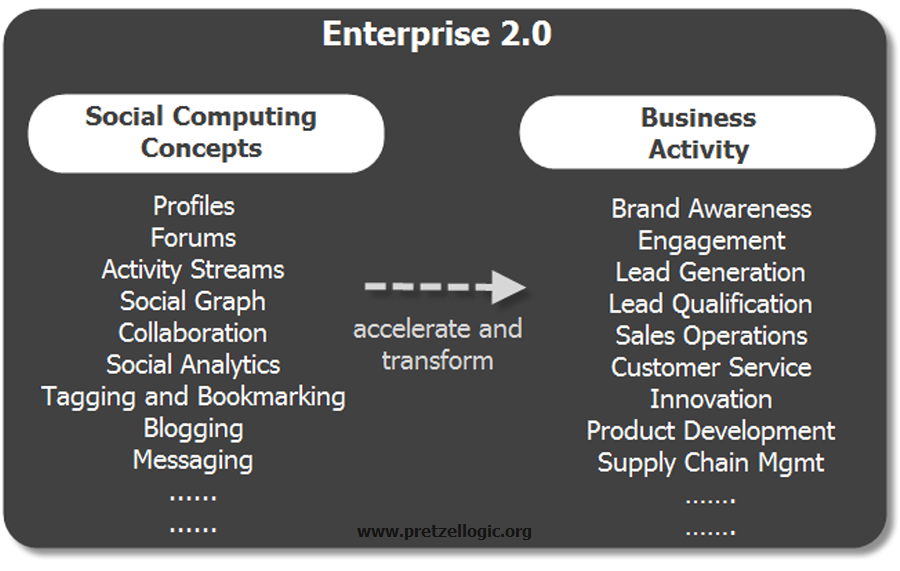


In 1999, Rick Levine, Christopher Locke, Doc Searls, and David Weinberger in their “The Cluetrain Manifesto”, wrote
“A powerful global conversation has begun. Through the internet, people are discovering and inventing new ways to share relevant knowledge with blinding speed. As a direct result, markets are getting smarter – and getting smarter faster than most companies.
Amongst their theses, the authors proposed the exploring of the intranets within the organizations, theorizing that intranets re-established real communication amongst employees in parallel with the impact of the internet to the marketplace (thesis 48) which will lead to a ‘hyperlinked’ organizational structure within the organization which will take the place of (or be utilized in place of) the formally documented organization chart.
Ten years on, easy connections brought about by cheap devices, modular content, and shared computing resources are having a profound impact on our global economy and social structures, fundamentally changing the way we do business. Driven by the network, communication / collaboration tools flourishing on the web, tools like YouTube, Facebook and Twitter, have changed not only how we communicate with our customers and stakeholders but also how we organize ourselves. Institutional sources like corporations, media outlets, religions, and political bodies have declined in significance with individuals increasingly take cues from one another rather than from these previous mass media outlets.
A History Of Social Ties
Social computing traces its origins to the research done in 1973 by Mark Granovetter, a sociologist now at Stanford.
Granovetters’ great insight was “The Strength of Weak Ties” (SWT) in which he proclaimed that it was weak ties which might actually be the more important ones for innovation and knowledge sharing.
Strong ties and weak ties are exactly what they sound like. Strong ties between people arise from long-term, frequent, and sustained interactions; weak ties from infrequent and more casual ones. The ‘problem’ with strong ties is that if persons A and B have a strong tie, they’re also likely to be strongly tied to all members of each other’s networks. This leads to redundancy in ideas since members tend to think alike. Weak ties however are relationships between members of different groups. These lead to a diversity of ideas as they tie together separate modes of thought.
SWT’s conclusions were that strong ties were unlikely to be bridges between networks, whilst weak ties were good bridges. These bridges helped solve problems, gather information, and import unfamiliar ideas. They help get work done quicker and better. Subsequent research has explored whether Granovetter’s hypotheses and conclusions apply within companies, and they appear to be quite robust. Weak ties have been known to help product development groups accomplish projects faster, reduce information search costs as well as greater innovation in the workplace.
Thus the ideal network for a current day knowledge worker probably consists of a core of strong ties and a large periphery of weak ones. Because weak ties by definition don’t require a lot of effort to maintain, there’s no reason not to form a lot of them (as long as they don’t come at the expense of strong ties). This is why social computing is coming to an Enterprise near you.
The Coming Era of Social Computing

Corporate SNS lets users build a network of friends, keep abreast of what that network is up to, and even exploit it by doing things like posting a question that all friends will see all within the confines of the enterprise itself. These activities are especially highly valuable where the company is large and/or geographically distributed one where you can’t access all colleagues just by bumping into them in the hallway.
This new paradigm is about considering people as the engines of the organization and their knowledge and social capital as the fuel. A new kind
The subsequent posts will address this field of social computing and how large enterprises are managing this transition.